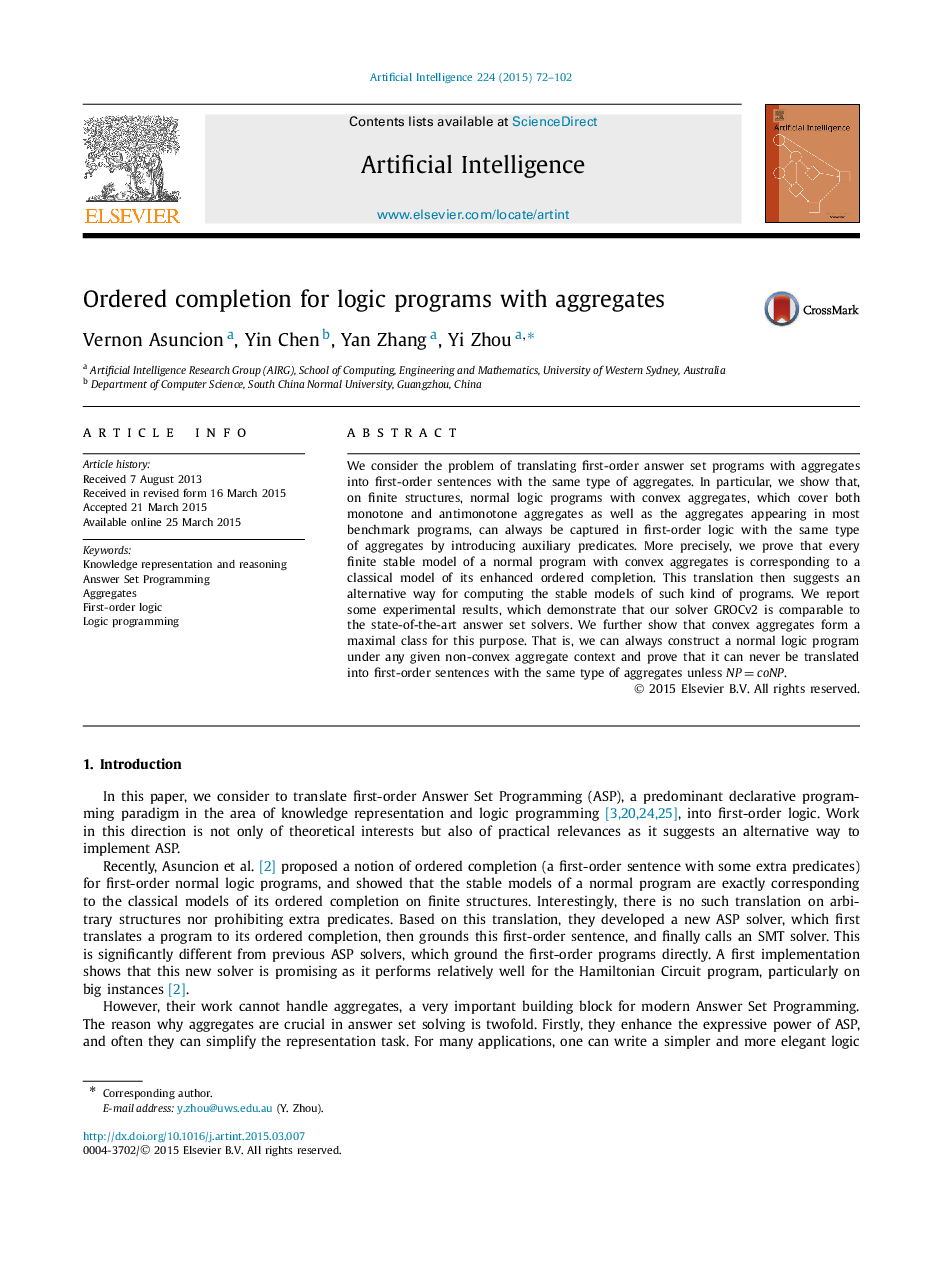| Article ID | Journal | Published Year | Pages | File Type |
|---|---|---|---|---|
| 376836 | Artificial Intelligence | 2015 | 31 Pages |
We consider the problem of translating first-order answer set programs with aggregates into first-order sentences with the same type of aggregates. In particular, we show that, on finite structures, normal logic programs with convex aggregates, which cover both monotone and antimonotone aggregates as well as the aggregates appearing in most benchmark programs, can always be captured in first-order logic with the same type of aggregates by introducing auxiliary predicates. More precisely, we prove that every finite stable model of a normal program with convex aggregates is corresponding to a classical model of its enhanced ordered completion. This translation then suggests an alternative way for computing the stable models of such kind of programs. We report some experimental results, which demonstrate that our solver GROCv2 is comparable to the state-of-the-art answer set solvers. We further show that convex aggregates form a maximal class for this purpose. That is, we can always construct a normal logic program under any given non-convex aggregate context and prove that it can never be translated into first-order sentences with the same type of aggregates unless NP=coNPNP=coNP.
